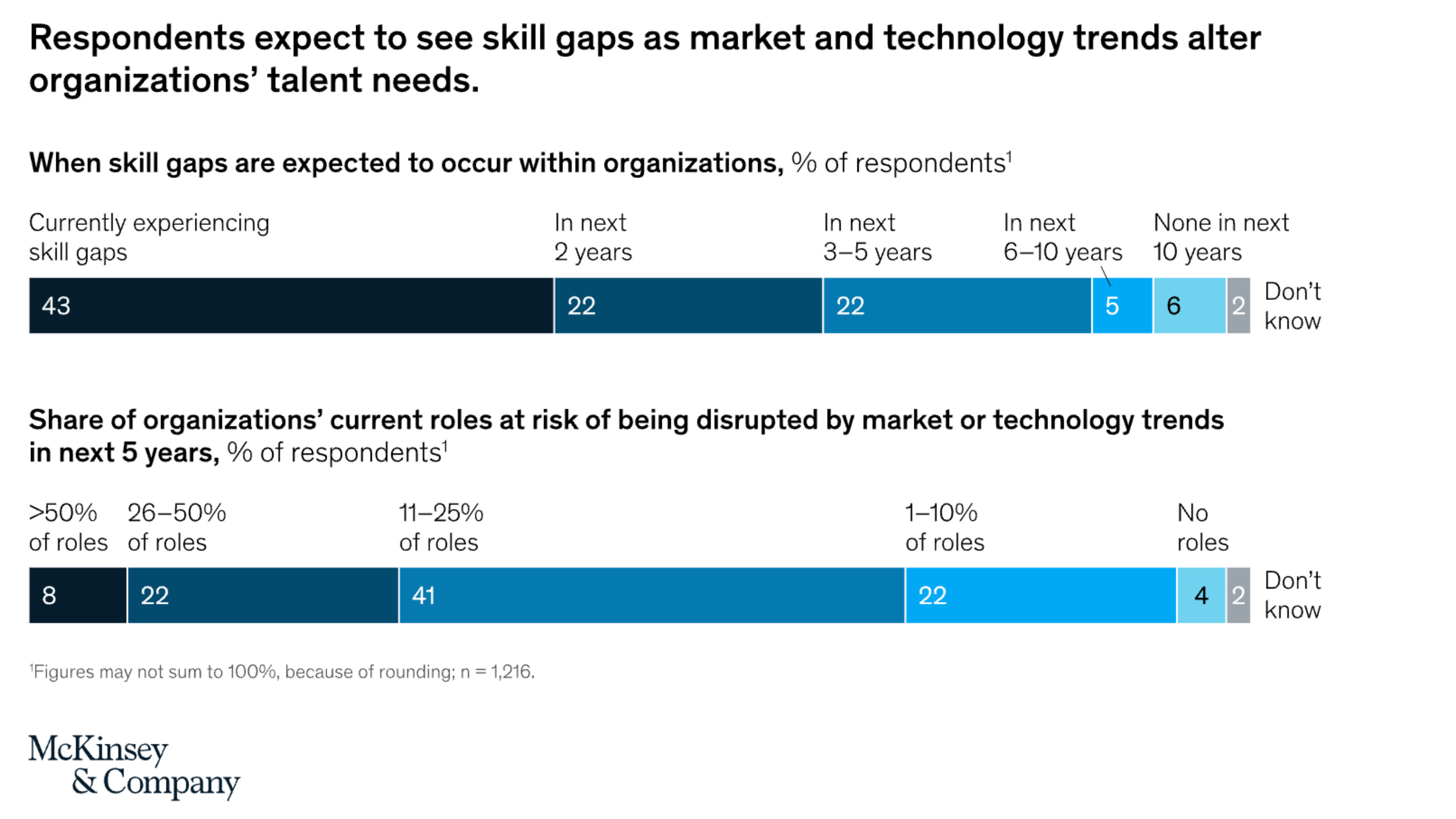In the United States, a majority of people begin their careers on frontline teams. Across Millennial, Generation X, and Baby Boomer generations, the most common positions include a cashier, a retail job, or a food service worker. Unfortunately, some workers get stuck in frontline positions due to personal circumstances or a persistent lack of opportunities to advance their careers. As time goes on, this may also create a noticeable technology skills gap compared to other workers who benefit from a more traditional career path.
In a corporate setting, frontline workers most often include receptionists, customer service representatives, front desk staff, warehouse employees, or any other type of employee whose job function requires significant face-to-face interactions with other people. These workers tend to possess skills that specifically match their assignment and cover practical, day-to-day operations.
The technology skills gap observed among frontline teams often includes a lack of specific competencies needed to excel beyond a frontline assignment, especially in an increasingly digital workplace. This may present itself as a lack of experience using advanced digital tools, online platforms, and collaborative technologies that drive innovation and profits within an organization.
According to McKinsey & Company, 87% of companies worldwide are either aware that they already have a skills gap or expect to have a gap within a few years. Around 41% of companies polled also report that up to a quarter of their organization’s roles will be disrupted due to market and technology trends in the near future.

No matter the scenario, skills gaps will preclude frontline workers from career advancement opportunities within an organization, which can slowly diminish an employee’s productivity and motivation to stay with their company. Upskilling and reskilling opportunities are smart investments for employers seeking to improve overall retention, reduce recruitment costs, and prepare an existing workforce for future innovation.
Identifying skills gaps in your organization
Before planning a complex initiative to mend a technology skills gap in an organization, it’s important to identify the skills existing employees already possess and determine what’s needed to match the company’s long-term goals and trajectory. This process is called a skills gap analysis. A thorough skills gap analysis will weigh a company’s long-term goals and growth strategies against the strength and efficacy of its current workforce.
The analysis should deeply consider the following:
- What roles are necessary to achieve the company’s objective or achieve the next milestone?
- What skills will the workforce need to support productivity, continued growth, and overall efficiency?
- What skills does the workforce already possess?
- What skills are missing, rare, or on the verge of disappearing from the workforce?
Armed with this information, a company can create a plan to close the skills gap and keep the organization on track to achieve and surpass established goals. In practice, this may be a new recruitment strategy, a tuition reimbursement program, or investments in training programs designed to educate existing employees who are already loyal to the company.
Upskilling frontline teams benefit a company’s top and bottom line
It can be up to 10 times cheaper to upskill a current employee than to recruit, hire, and onboard a new person. Offering educational programming to employees can also help a company fill internal vacancies once that employee has completed an educational program and can demonstrate competency in new skills. Employers that offer upskilling programs also tend to exhibit higher retention rates, productivity, and loyalty among workers.
According to LinkedIn’s 2019 Workforce Learning Report, 94 percent of employees say they would choose to stay at a company longer if it invested in helping them learn. This was particularly true among Gen Z and Millennial respondents who said they preferred companies that offered upskilling programs and formalized career pathing.
Pathstream’s scalable upskilling and training programs can bridge organizational skills gaps and attract top talent. Designed specifically for frontline workers; our career mobility platform helps reskill and empower these employees to transition out of their roles into professional leadership positions. The goal is to help our clients retain the workforce, reduce recruitment costs, and improve overall productivity.
Was this helpful?
Thanks! What made it helpful?
How could we improve this post?







